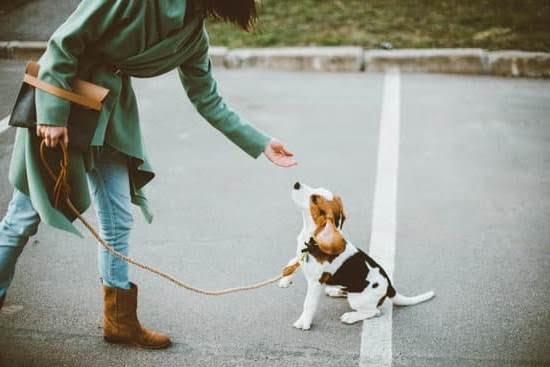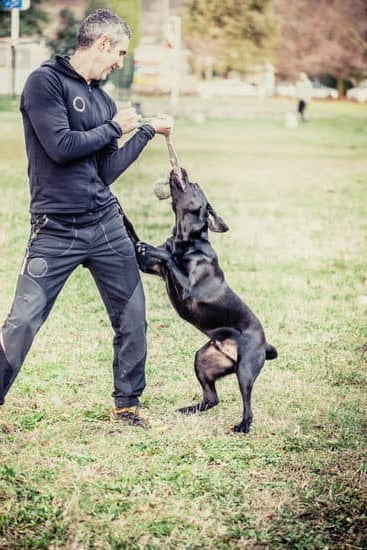Discuss Guidelines & Regulations
Physical corrections are typically defined as discipline techniques that aim to correct or eliminate behavior in a dog by applying physical force in some form. When it comes to physical corrections in dog training, there are certain legal standards and best practices that should be adhered to.
First, any technique used should always be humane and non-abusive. Corporal punishment should never be used, as it can cause physical or psychological damage to the dog. In most jurisdictions, only actions such as touching the dog lightly on the neck or flank or using a leash jerk are allowed.
Second, guidelines from the relevant governing body for responsible pet ownership should be consulted and follow when practicing methods of physical corrections with a dog. These statutes will vary across countries and regions but generally outlaw all forms of abuse or mistreatment of animals. Violation of these strictures can result in fines and other penalties.
Finally, the dog’s comfort level should always be taken into consideration when using any form of correction during training sessions. Physical corrections should only be administered judiciously and given strictly within particular parameters such as appropriate timing or intensity level so that no harm is caused to the animal involved. Effective communication about desired behaviors needs also be maintained at all times through firm but positive reinforcement rather than punitive measures whenever possible.
Consider Ethical Concerns
Physical corrections refer to any type of physical touch or interaction between a dog and an owner or trainer in order to modify the animal’s behavior. This could include slapping, swatting, dragging on a leash, or employing positive punishment techniques such as shock collars. Ethical concerns and considerations when it comes to the use of physical corrections include potential pain or fear experienced by the animal, disruption of the trusting bond between handler and dog, and potential for increased aggressive behaviors. Animal welfare experts and veterinarians often urge owners to avoid physical corrections altogether and instead build relationships with their pets through positive reinforcement. Additionally, it’s important to keep in mind that dogs are living creatures that require understanding, respect, and compassion just like any other. Consequently, physical corrections should only be used if absolutely necessary – after all other training methods have been exhausted – and they should be done in a manner that is safe and respectful towards the animal. When deciding if physical corrections are okay in dog training, weigh the risks against any potential long-term behavioral benefits carefully before deciding what’s best for you and your pet.
Address Different Dog Breeds
Physical corrections in dog training can be an effective tool, but it should always be used with thought and care. Each type of dog breed has its own unique behaviors, needs, and tolerance for corrections. For example, a smaller terrier has a smaller overall body size than a larger Labradoodle, which means that physical corrections may not work as well with this type of dog as they may with a bigger breed. Therefore, physical corrections may need to be adjusted accordingly for different breeds of dogs.
Alongside this, certain breeds of dogs tend to be more sensitive to physical corrections than others. Working with an emotionally fragile canine can result in unintentional harm if the wrong type or inappropriate level of force is applied. As such, patience and proper technique must be used when using any type of correction during training to ensure the safety and wellbeing of all parties involved.
Prevent Common Mistakes
1. Avoid using physical corrections as a primary training method: Physical corrections should only be used when all other methods of non-physical discipline have not worked, and even then they should be used sparingly and judiciously.
2. Monitor your dog’s behavior closely to ensure it is responding to the corrections appropriately: The goal of using a physical correction is not to suppress the behavior entirely, but rather to modify it in order that it is less annoying or disruptive.
3. Remain consistent in the application of physical corrections: If you decide to use physical corrections, use the same level of intensity each time wherever possible and make sure you provide consistent reinforcement or rewards for desired behavior. Too much inconsistency can confuse your dog and cause them to become frustrated.
4. Always use positive reinforcement soon after: Reassure your dog with positive feedback such as verbal praise or treats after providing a physical correction in order to maintain a healthy relationship. This will help reinforce the positive behavior you would like him to continue exhibiting instead of punishing him for any undesired behaviors he has already shown.
Highlight Alternatives to Physical Corrections
Physical corrections should not always be seen as the only way of training a dog. There are many alternative training methods that can be just as effective without the potential of causing fear or pain. Positive reinforcement is one such method that focuses on rewarding desirable behavior to encourage and reinforce it. Giving treats, praise, petting, and extra playtime when a dog performs a desired behavior produces long-term results in training. Clicker training is another way to again reward correct behaviors while remaining free from any physical correction or punishment. When using this technique, owners mark desired behaviors with the sound of a clicker before giving treats as rewards for those actions. Other methods may include shaping, which involves reinforcing incremental steps taken towards the desired behavior, or proximity and atmosphere control techniques where owners can control the timing of rewards and punishments by utilizing different locations in their home or yard rather than relying on physical corrections for reinforcement. These approaches involve positive reinforcement and allow for consistency with messaging between owners, making them effective alternatives to physical corrections in dog training.
Explore Different Tools & Devices
Physical corrections, when done correctly and at the appropriate time, can be a useful tool in dog training. It’s important to recognize that not all physical corrections are created equal, and various tools and devices can be used to supplement physical corrections during the training process. These can include clickers, target sticks, reward markers or verbal commands such as “no” accompanied with a hand signal. Some trainers also use longer leashes to give the dog more freedom while still retaining control. Other options may include audible signals, tactile stimulation such as tapping or patting on the chest or shoulder, collar pulls or leash tugs. Each of these tools should be carefully selected to maintain effectiveness while reducing stress and potential emotional damage to the animal being trained.
Provide Real Life Examples
Physical corrections can be an effective tool in dog training if used appropriately and humanely. For example, a tug on the leash can serve as an interruption while a dog is barking or lunging at another canine and is far more effective than yelling. Similarly, a light tap or pinch to the hind legs can help refocus a pooch’s enthusiasm before they begin to jump on visitors or furniture. A sound pinch on the back of the neck can stop a dog from misbehaving but should never be used for teaching complex behaviors like “sit” or “lie down”. In those cases, positive reinforcement techniques are much more appropriate and effective. Finally, experienced trainers might opt for using remote collars (controlled by radio waves) to provide consistent control over large distances – but only after proper training and understanding of the technology has been applied first.

Welcome to the blog! I am a professional dog trainer and have been working with dogs for many years. In this blog, I will be discussing various topics related to dog training, including tips, tricks, and advice. I hope you find this information helpful and informative. Thanks for reading!





